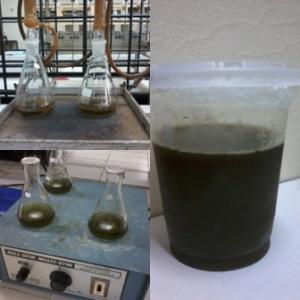IPB Innovation: Healthy Grass Jelly Drink

Grass jelly has been known by the community as the food for fever, nausea, gastric inflammatory drug, cough and lowering high blood. The contents of bioactive compounds in the grass jelly are amongst all chlorophyll, B carotene, alkaloid, saponin, tannins, steroid and glycosides.
The grass jelly is generally produced and consumed in form of beverage. In addition, the grass jelly products processed commercially and presented in cans generally use high enough sweetener, which if consumed quite often it will cause the effects of excess calories to the body. Besides, the consumption of sugar-sweetened beverages/SSBs also has a risk of diabetes.
Therefore, Researchers of IPB, Nur Khoiriyah and Leily Amalia from Department of Community Nutrition, Faculty of Human Ecology, Bogor Agricultural University (Fema IPB) formulated the products of grass jelly drink as the functional food of the source of antioxidant which had been published in Jurnal Gizi & Pangan in July 2014. The observation and analysis were conducted in Laboratory of Food Experiment and Laboratory of Organoleptic, Department of Community Nutrition of Fema IPB.
This research was meant to make the development of functional food products from the grass jelly base material i.e. the product of jelly drink which was low in calory and high in antioxidant. This product was expected to be able to be an alternative solution in the processing of functional food based on the grass jelly which was useful in fixing the anti-oxidative lipid profile of the body.
The content of phenols in the grass jelly significantly had affected the antioxidant activity and had the effect of scavenging in free radicals, reduction of blood cholesterol, and loweing the concentration of Malondialdehid or MDA of blood. The contents of bioactive compounds, which were quite high, made some types of vegetables to be grouped as the functional food, so the grass jelly also had potential to be made as the functional food because the content of bioactive compound was quire high.
In addition to having a high content of bioactive compound, the grass jelly also had the fiber content which was high enough. The main component of the extract of grass jelly was the pectin which was a polysaccharide that had low methoxy. (dh)



